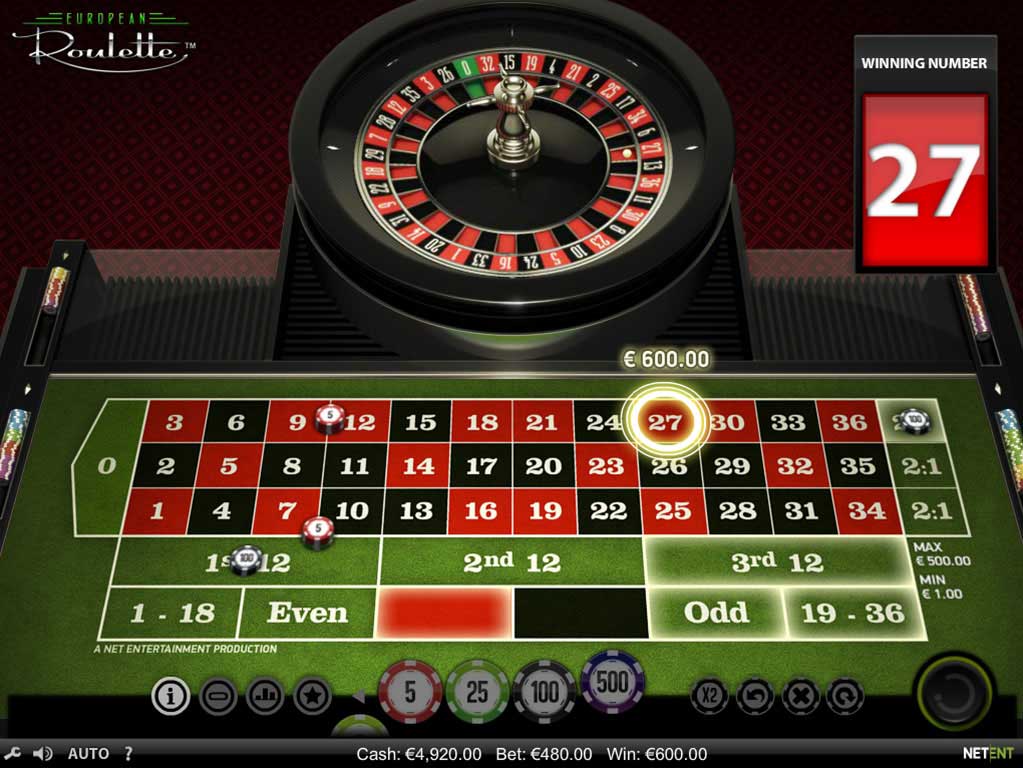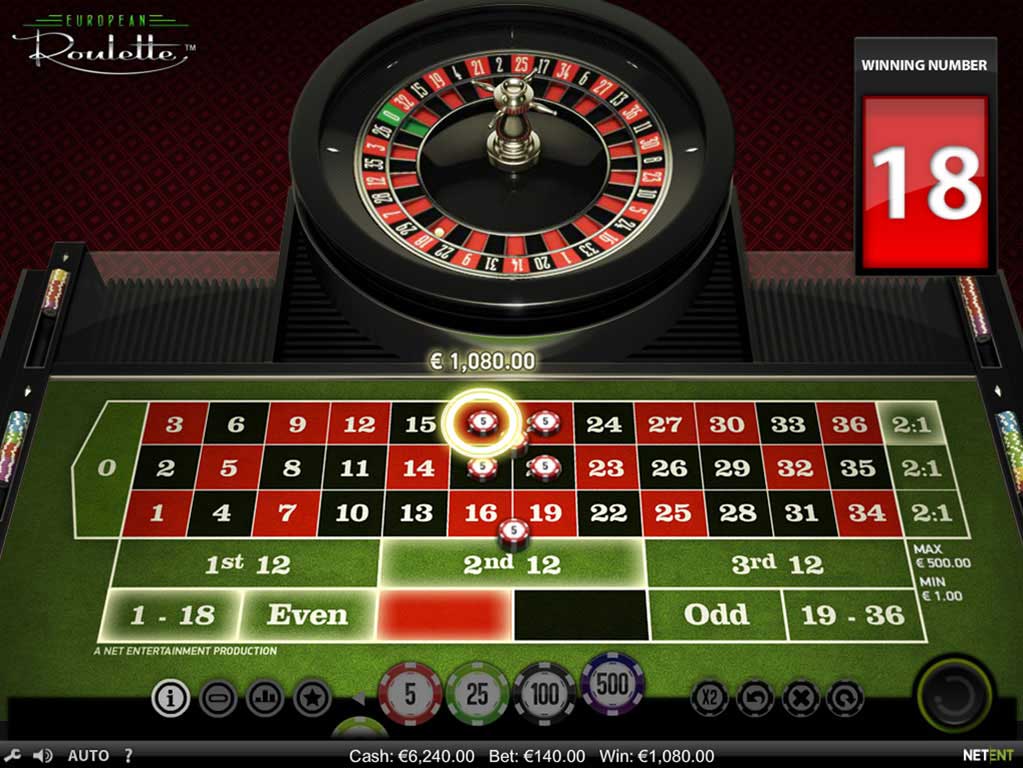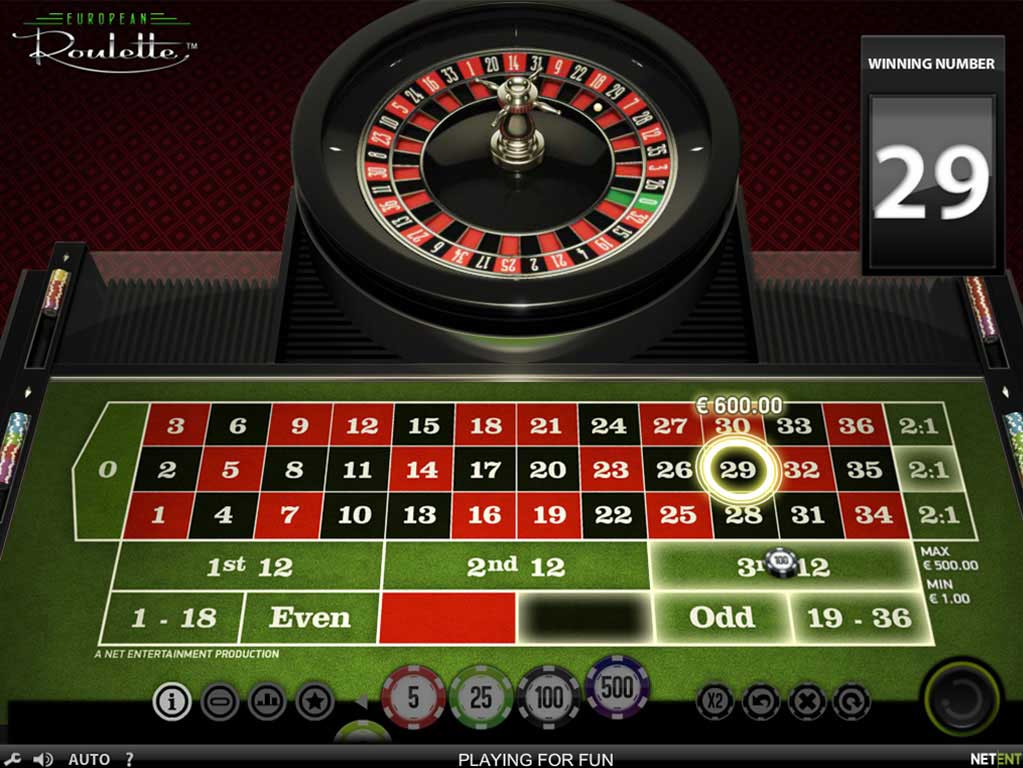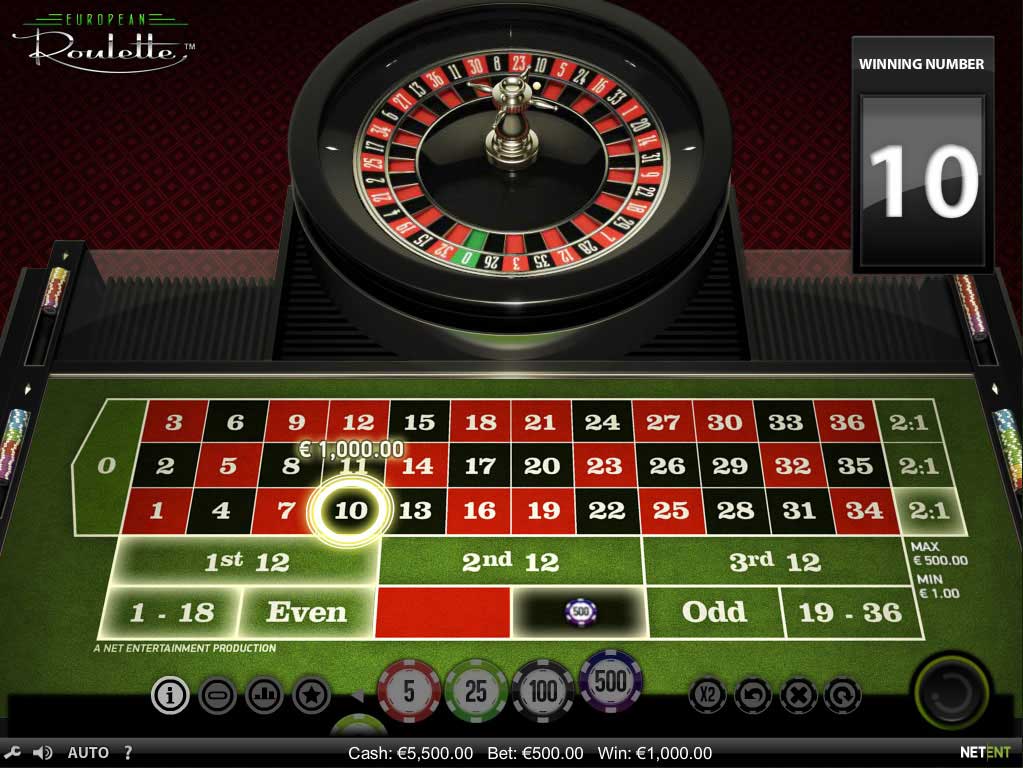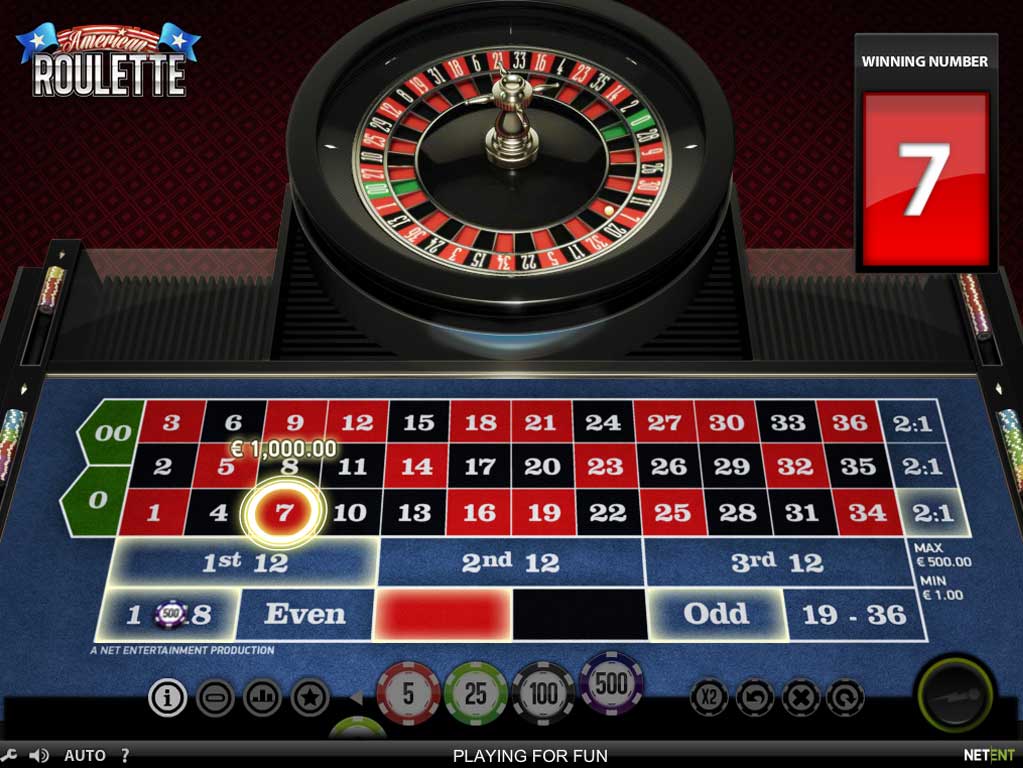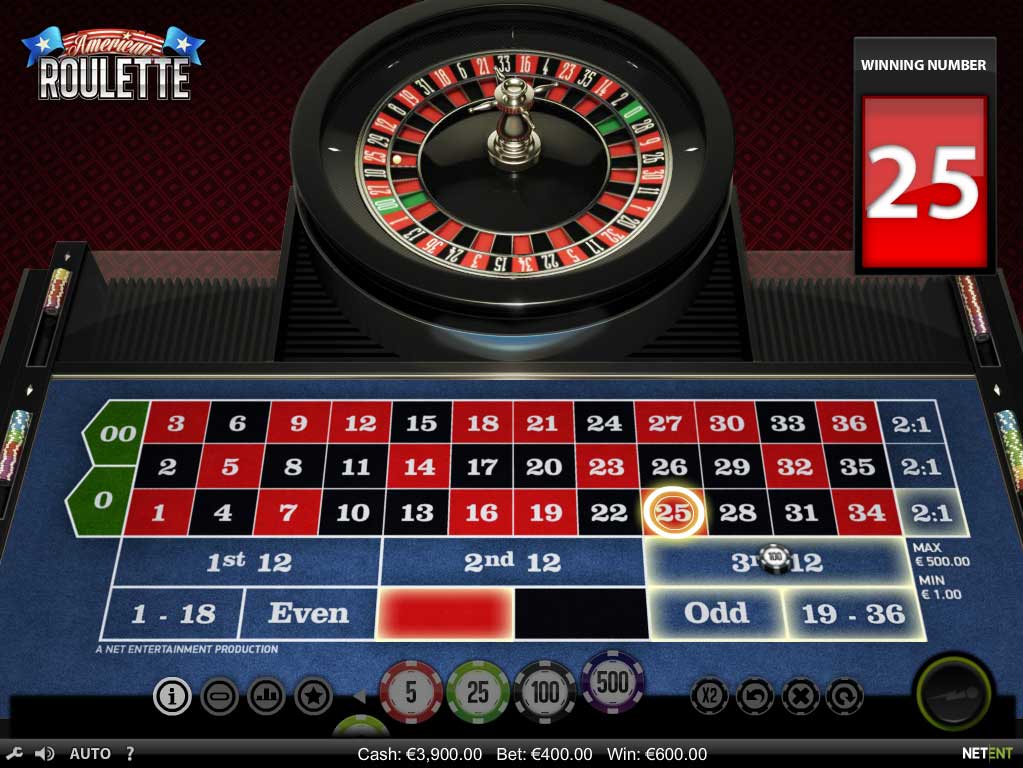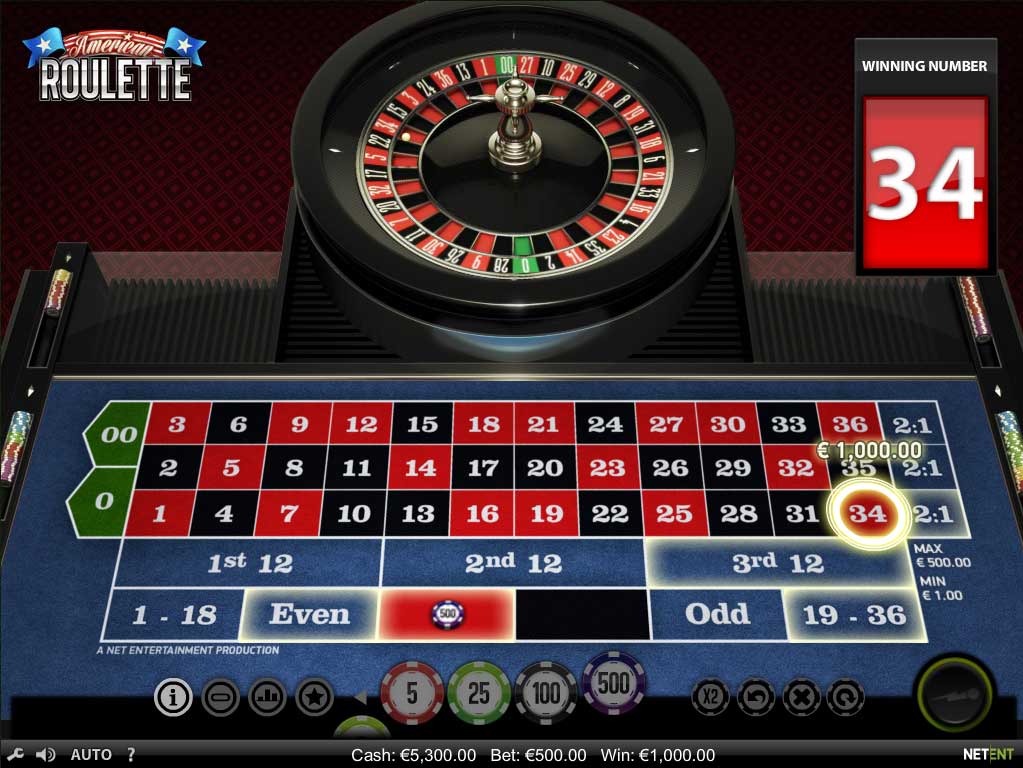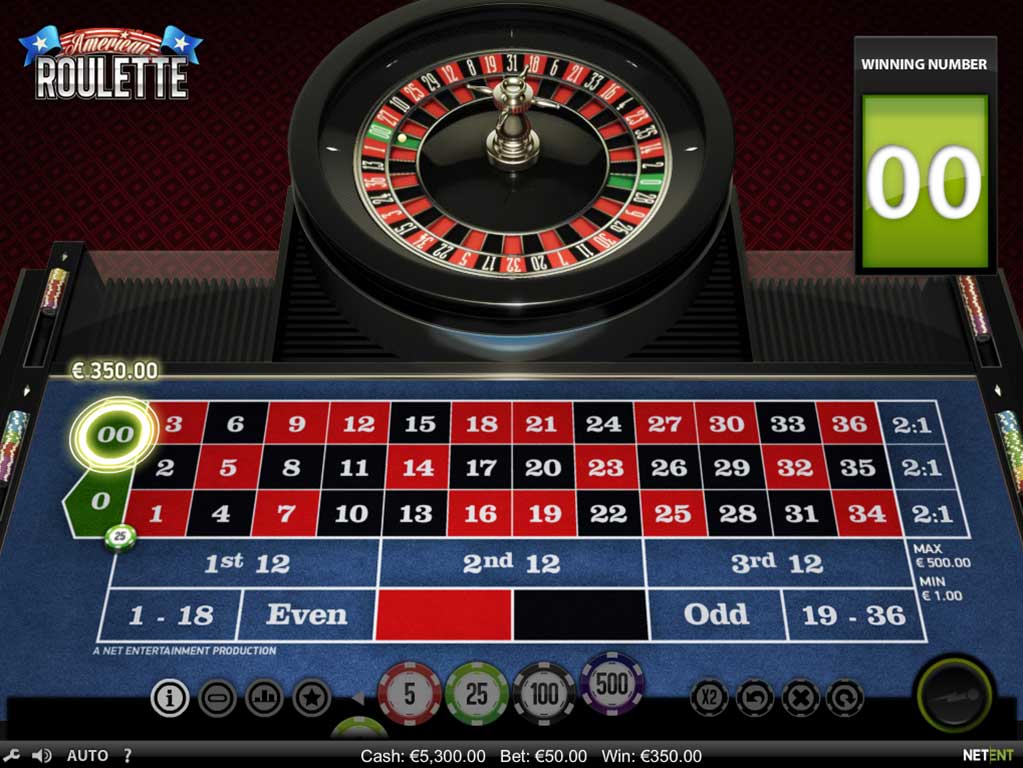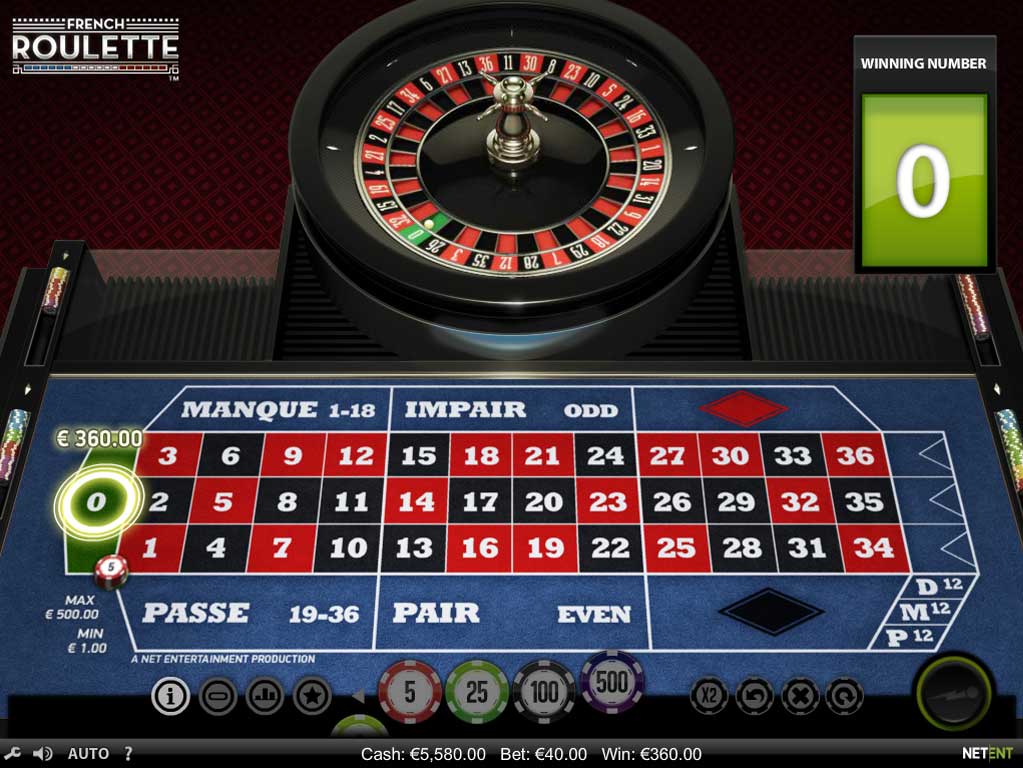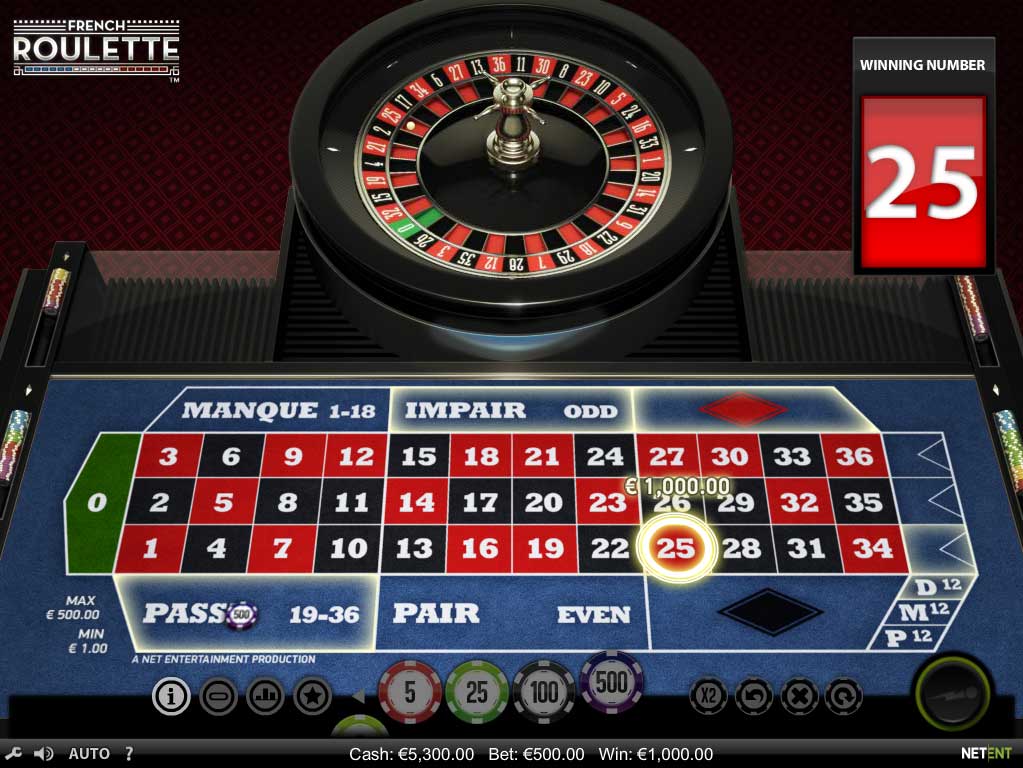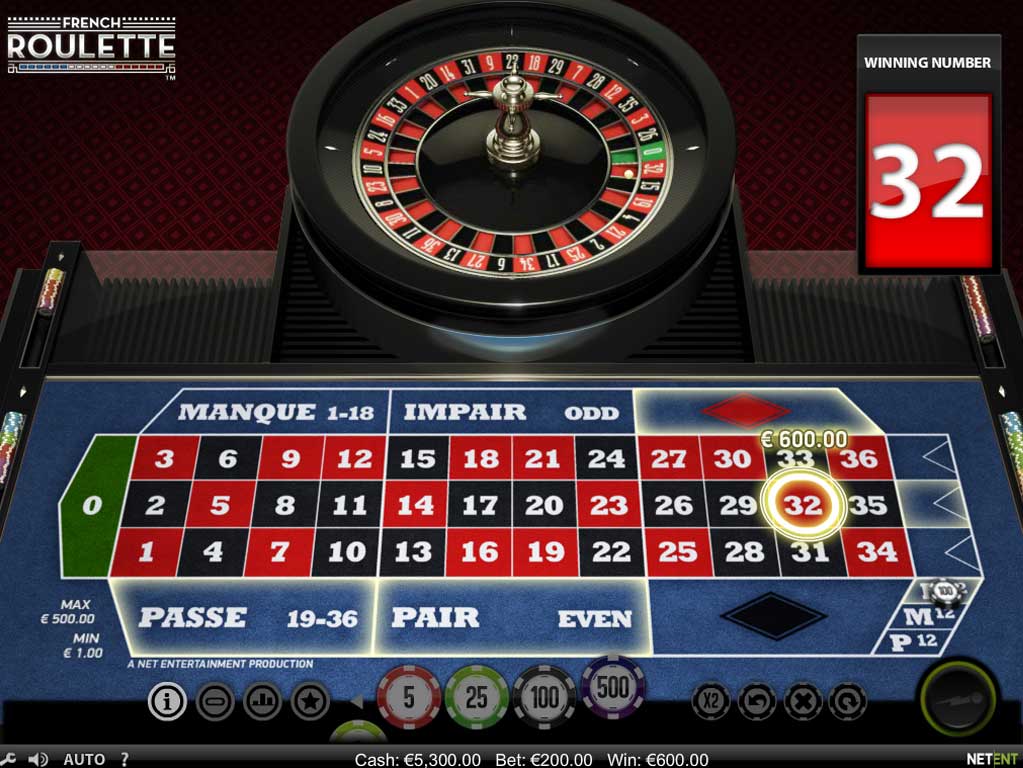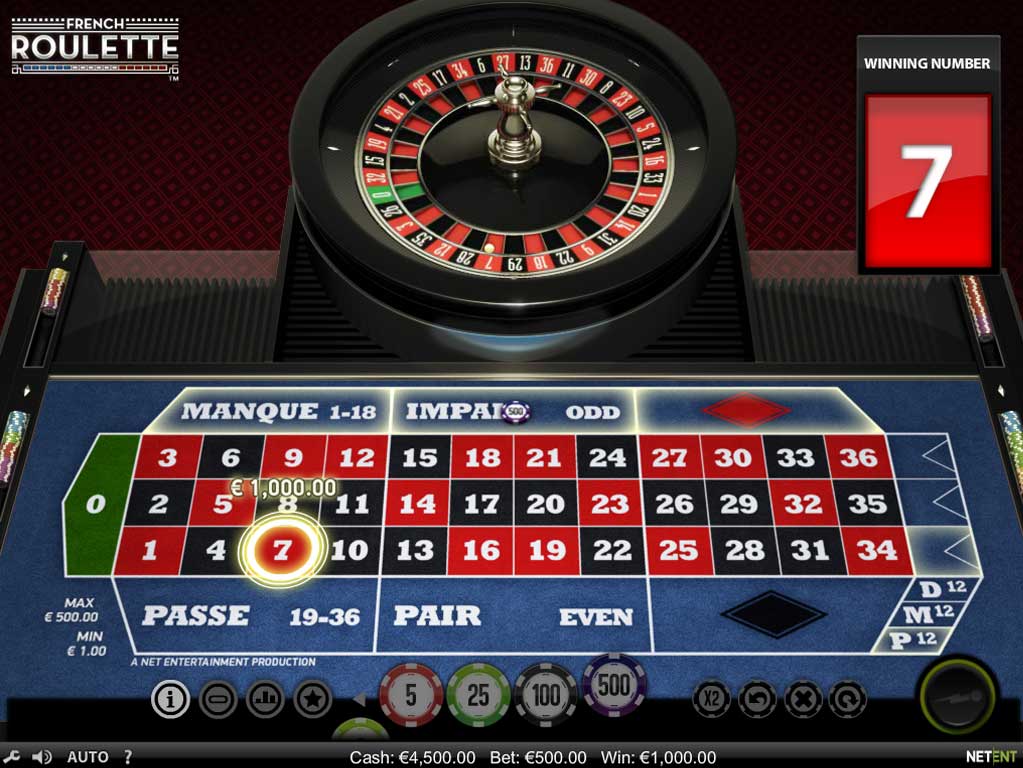Roulette is one of the simplest casino games which partially accounts for its tremendous popularity. Many gambling enthusiasts play this game of chance in preference to other mainstays on the casino floors because it presents them with a broad range of betting choices. While the rules of the game are beyond simple to learn, many novices are initially confused by the different roulette variants.
The truth of the matter is the differences between the three main variations, European, American and French roulette, are ever so slight while the focal principles of the game practically remain the same. In its very essence, roulette is still a game of chance regardless of which version you play and there is very little you can do to improve your overall odds of success.
These seemingly slight deviations in terms of rules and wheel design, however, do affect the house edge of different roulette variations. Because of this, it is important for inexperienced players to first understand how the differences in popular roulette variants would impact their odds of winning. Choosing the game which offers you the lowest house advantage translates into greater profitability for you in the long term. If you want to conquer this enticing game of chance but are unfamiliar with the differences between the three most common roulette variations, reading this article is a good way to start.
European Roulette
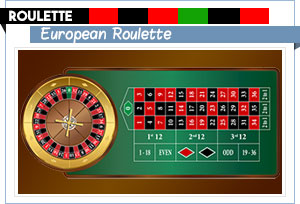 European roulette easily ranks as the most popular variant of the game and as such, is widely preferred by millions of recreational and seasoned players around the world. The name of this variation is, in fact, a misnomer as the game is played all over the world. While this variant is more common on the Old Continent, it is possible to find European roulette tables in some high-limit casinos in the United States as well, albeit rarely.
European roulette easily ranks as the most popular variant of the game and as such, is widely preferred by millions of recreational and seasoned players around the world. The name of this variation is, in fact, a misnomer as the game is played all over the world. While this variant is more common on the Old Continent, it is possible to find European roulette tables in some high-limit casinos in the United States as well, albeit rarely.
The European variation is played on a wheel containing 37 divisions or pockets. One of these is coloured in green while the others alternate red and black and contain numbers 1 through 36. The wheel on European roulette tables is normally positioned in the centre and there are two layouts on each side which mirror each other. Each layout is operated by a separate dealer, which is why European roulette tables can accommodate a greater number of players.
The bets in European roulette can be divided into two main categories. Inside bets are made either on single numbers or on whole groups of numbers on the table layout. Outside bets are more likely to win because the player is betting on the numbers’ properties – whether the next number to come up would be red, black, odd, even, low (1 through 18) or high (19 through 36). There are as many as 18 numbers that are red, odd and high while the remaining 18 numbers are respectively black, odd, and low.
The odds of winning and losing with such bets are almost equal but not entirely because of the presence of the zero on the wheel. Since the likelihood of correctly predicting the outcome of such outside bets is higher, they offer low, even-money return. In roulette, the zero practically has no parity, which is to say it is neither even, nor odd. The zero is there simply to cause even-money bets to lose. When the ball settles into the green pocket, all bets on number properties lose which gives the house its edge.
The sequence of numbers on European wheels accommodates a few additional bets in this version of the game. These are known as “call” or “announced” bets and cover entire sections of the wheel, some of which contain up to seventeen adjacent numbers. As the name of this bet category implies, the player announces what call bet they wish to make and the dealer places the chips for the bet in the respective section of the racetrack.
This is done to accommodate both players and dealers and speed up the game. In contrast, the dealers are not permitted to make bets on players’ behalf in American roulette because the number sequencing on the wheel in such games is different and does not allow for call bets. In online roulette games, however, players need not comply with this table etiquette.
The fact there is only one zero pocket increases the player’s odds of winning in comparison to the expected value the American variation offers. Players are overall advised to stick to the European, single-zero variants of roulette, if possible, since the casino holds a relatively low advantage of 2.70% in such games. In conclusion, European roulette is more favourable for players over the long run.
American Roulette
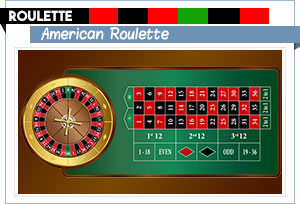 As the very name of this variation implies, it is commonly played in gambling venues throughout the United States. Despite that, the game can be found in various casinos around the world and the majority of online gambling operators have also added it to their table games collections.
As the very name of this variation implies, it is commonly played in gambling venues throughout the United States. Despite that, the game can be found in various casinos around the world and the majority of online gambling operators have also added it to their table games collections.
American roulette offers players an additional number to bet on since there is a second, double zero pocket on the wheel. As a matter of fact, the additional double zero is by far the only tangible distinction between the American and European variations of roulette. Apart from the two green pockets with the zeroes, the American wheel contains numbers 1 through 36 which makes for a total of 38 divisions. The double-zero wheel, as it is commonly called, utilizes a different sequence for its numbers which makes it impossible for players to make call bets.
While the extra pocket has no impact on the way American roulette is played, it influences the players’ odds of winning. In fact, the more accurate phrasing would be the double zero reduces your chances of winning with all bet types, outside or inside. The presence of a second green pocket tilts the game even further in the house’s favour as the casino has an edge of 5.26% in American roulette.
However, if you are a traditionalist and prefer to play in landbased casinos, you may be able to come across double-zero roulette tables where the Surrender rule applies. Such games are typically offered in casinos throughout Atlantic City. Online variations of American roulette normally do not offer the Surrender rule.
Surrender resembles the La Partage rule, common to French roulette, where players are given half of their original stake back whenever the ball settles in the 0 or the 00 pocket. Of course, Surrender is an option only when one places even-money bets on the properties of the numbers. The great thing about the Surrender rule is that it causes the house edge in American roulette to drop from 5.26% to 2.63%. Ironically, this is lower than the edge in the European variation of the game.
Another stark difference between single-zero and double-zero roulette games results from the addition of one extra inside bet. It is called the Five-Number bet and as its own name suggests, it covers five specific numbers, namely 0, 00, 1, 2, and 3. In some American variations, it goes by the name of Top-Line bet. Regardless of what it is called, this bet should never be made because it is extremely unprofitable for the player.
You win if any of these five numbers comes up and will collect a meagre payout of 6 to 1. Meanwhile, the Five-Number bet carries the highest house edge in roulette which stands at 7.89%. The equivalent of this bet in the European variation is the Basket bet which covers only four numbers, 0, 1, 2, and 3 because of the missing double zero. The Basket bet, however, is more favourable to players because there is no increase in the house advantage.
French Roulette
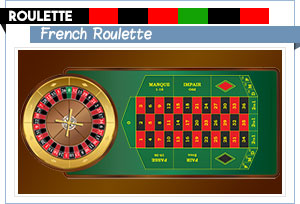 In French roulette, everything is almost the same as in European roulette as far as rules and wheel design are concerned. The bet types are largely the same as well. Similarly to the European variants, the French one utilizes a single-zero wheel with a total of 37 divisions. A French wheel utilizes the same sequencing of numbers as the one used in European roulette.
In French roulette, everything is almost the same as in European roulette as far as rules and wheel design are concerned. The bet types are largely the same as well. Similarly to the European variants, the French one utilizes a single-zero wheel with a total of 37 divisions. A French wheel utilizes the same sequencing of numbers as the one used in European roulette.
Differences may be observed when it comes to the layouts of the French and the European tables. While the main betting grid containing all the individual numbers is essentially the same, the names of the outside outcomes are normally written in French.
Bets on colours are usually labelled as Rouge/Noire but in some instances, red and black diamonds are used to denote where the chips for these wagers are placed. The betting boxes for odd/even and high/low wagers read Impair/Pair and Manque/Passe, respectively. The boxes for Dozen bets are typically smaller on the French layout and read P12, M12, and D12 which stand for Premier, Moyenne and Derniere Douzaine.
Believe it or not, one of the biggest differences between French and European variations has to do with the chips players use. In most games of roulette, the chips have no denomination on top. Because of this, they are actually called “checks”. At European tables, there are usually eight sets of chips, each set being of a different colour. When players exchange their cash for these checks, each person is given a set of a different colour to prevent mix-ups of bets on the layout.
The value of each check is determined by dividing the player’s overall buy-in by the number of the checks they have received. Checks have no value of their own and therefore, cannot be exchanged for real money at the cashier cage. At many French roulette tables, however, the players receive actual cash chips instead of these coloured checks.
In most French variations of the game, there are additional rules which normally do not apply on double-zero tables. The first one is the La Partage, where half of the player’s original stake is returned to them in case the ball lands on the zero pocket. The second French rule is called En Prison which literally translates as “in prison”. When zero hits, the player is given a second chance to at least get their original even-money stake back. Thus, their chips are “imprisoned” at the table for the next spin and if the bet wins the second time around, the player recovers their initial stake.
Differences between American and French Roulette Wheels
It makes sense that the wheel is the very essense of roulette since it determines the outcome of each bet, made at the table. As was already mentioned above, two types of wheels can be used in this game of chance. Double-zero wheels contain 38 pockets and are prevalent in the United States, Canada, the Bahamas, and certain parts of Asia. Single-zero wheels have a total of 37 pockets and are considered more advantageous to players because of the reduction in house edge they offer. These normally prevail in casinos throughout Europe.
Apart from the number of zeros, the two types of wheel differ in terms of number sequencing. The numbers are arranged in a specific order so as to ensure the randomness of the results. One thing that both single and double-zero wheels have in common is that the red and black pockets always alternate.
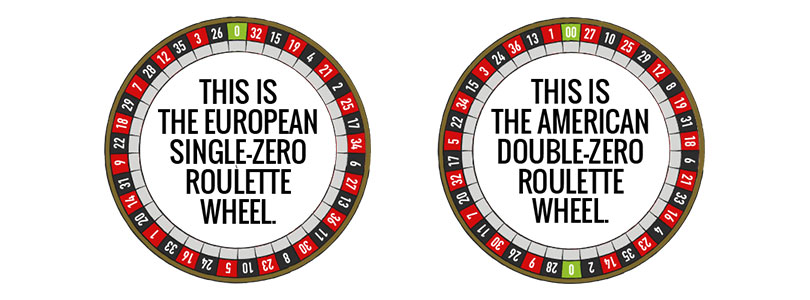
On single-zero wheels, the green pocket with the zero is located between numbers 26 and 32. Another tendency concerns the distribution of high and low numbers. Next to each low number within the range of 1 through 18, there is a high number within the range of 19 through 36. Numbers 5 and 10 are the only exceptions to this rule as they sit next to each other and are opposite of the green pocket.
The position of 5 and 10 is not coincidential as these two numbers split the single-zero wheel into halves, so to speak. The total of the numbers in each of the two halves is precisely 333. Each half has exactly 9 red and 9 black pockets. Finally, the numbers in the pockets are normally facing inwards. This unique sequence allows for making call bets which are based on entire wheel sectors.
In American roulette, the 0 and the 00 pockets are facing each other and also split the wheel in halves. The numbers in each of the two halves again make for a total of 333, therefore the entire sequence adds up to 666 – a fact many roulette fans believe is not entirely coincidental.
The single zero is located between two black pockets, containing numbers 2 and 28. The double zero is positioned between 1 and 27 Red. Each number sits opposite to the number that comes next in numerical value. Therefore, number 1 is opposite to number 2, number 27 is opposite to 28, and so on. Pairs of odd and even numbers alternate. Each half of the wheel contains 9 red and 9 black pockets. The last peculiarity of double-zero wheels is that the numbers are facing outwards, i.e. towards the wheel’s rim.
Hybrid Wheels
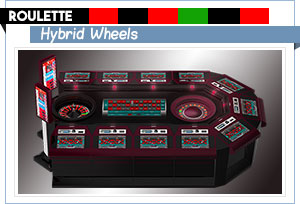 Some roulette tables utilize the so-called “hybrid” wheels where there is only one green pocket containing the single zero, but the characteristics of the game are American i.e. the table’s layout is in English. There are several variations when it comes to hybrid wheels as some tables use the American sequence of numbers while others use the European standard. This largely depends on which country the casino is located in.
Some roulette tables utilize the so-called “hybrid” wheels where there is only one green pocket containing the single zero, but the characteristics of the game are American i.e. the table’s layout is in English. There are several variations when it comes to hybrid wheels as some tables use the American sequence of numbers while others use the European standard. This largely depends on which country the casino is located in.
The position of the zero on hybrid wheels with the American sequence is inconsistent and also varies between gambling venues. Sometimes, the single zero may be located between 1 and 27, which is where the double zero is normally placed. The gambling venues in the United Kingdom have adopted hybrid wheels with the European number sequence where the zero is positioned between pockets 26 and 32.
Another thing to take into account are the rule deviations at tables with hybrid wheels. In some parts of the world, the United Kingdom for example, the La Partage rule applies at roulette tables with hybrid wheels, which reduces the house edge by half for even-money bets on number properties. Hybrid wheels can also be found at some roulette tables in Atlantic City but the difference is that the Surrender rule is not applicable in single-zero games there.
The Effect of the Zero Pockets on the House Edge
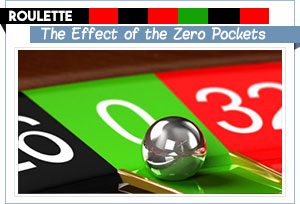 All savvy and experienced roulette players would recommend novices to learn a thing or two about the house advantage before they make their first real-money bets. There are different terms that denote the advantage the casinos hold over their players. Some call it vigorish or vig, others prefer to use the terms house take or house edge. Call it what you will but each of these terms refers to the same thing – the amount of money the house inevitably collects on every single wager someone makes in a casino game.
All savvy and experienced roulette players would recommend novices to learn a thing or two about the house advantage before they make their first real-money bets. There are different terms that denote the advantage the casinos hold over their players. Some call it vigorish or vig, others prefer to use the terms house take or house edge. Call it what you will but each of these terms refers to the same thing – the amount of money the house inevitably collects on every single wager someone makes in a casino game.
In more general terms, the casino gets its advantage by adjusting the payouts on winning bets. There is a discrepancy between the mathematical odds of winning with a given bet and the payouts the casino offers for that bet. Another way to explain it is to say the house edge represents the average long-term profit the casino generates from all bets players make in any given game.
In the game of roulette, it is the green pocket with the zero that gives the house its edge. Had it not been for the zero, the players and the casino would have been even, with no party holding any advantage over the other, which would render running roulette games pointless from the perspective of gambling operators.
Unlike some other casino games where the house edge varies between bet types, all roulette bets offer the house the same advantage. The only exception to this rule is the Five-Number bet in American roulette where the discrepancy between true odds and house odds is so pronounced that it gives the casino an absurd advantage of 7.89%.
As we have already said, 18 of the pockets contain red, odd, and high numbers, while the other 18 have black, even, and low numbers. It makes sense that the chances of winning with a black number would be equal to the chances of winning with a red one or 18 to 18. Unfortunately, there is the zero to disturb this equilibrium. The zero is green and does not fall within the range of high or low numbers. It is neither even, nor odd in roulette. Therefore, all even-money bets on number properties in this game are automatic losers should the ball fall into the zero pocket. This disturbs the delicate balance in the odds and slightly shifts things in favour of the casino.
Thanks to the single zero, there are only 18 ways to win with even-money outside bets as opposed to the 19 ways to lose. Therefore, the actual likelihood of winning with a bet on black, for example, is always 48.64% instead of 50%. Meanwhile, when you do succeed with one such outside bet, the casino will pay you out at a rate of 1 to 1 as if the odds of you winning are really 50% whereas the actual return should be a tiny notch higher at 1.06 to 1, at least on single-zero wheels. Such discrepancies are to be found in the payouts of all other bet types as well. For instance, the odds against winning with a Straight Up bet on single numbers are 36 to 1 but the house would offer you a return of 35 to 1.
The addition of the double-zero pocket in American roulette further decreases players’ chances of winning both with their inside and outside bets simply because it accounts for one extra outcome in the game. Meanwhile, the payouts in a double-zero game remain the same which gives the house twice the edge, of 5.26%. There is a further reduction in the probability of winning with even-money outside bets which now drops down to 47.36%. This is so because the player can win with 18 numbers against 20 numbers that lead to a loss. Therefore, the correct payout ratio should be a bit higher at 1.11 to 1.
On the bright side, if the La Partage, En Prison, and Surrender rules apply in the game, they can partially offset the negative impact of the zeros on players’ bankrolls. The Surrender rule is said to reduce the house edge in double-zero games in half, to 2.63%. Despite that, it is the roulette variations with La Partage and En Prison rules that are considered the most profitable for players because they reduce the house advantage in single-zero games from 2.70% to 1.35%.
The bottom line is players are recommended to avoid double-zero variations of roulette, whenever possible. There is hardly anything one can do to beat the house in one such game of chance. No matter how successful a player is at the roulette table, sooner or later the house edge will catch up with them.
- American Roulette
- Best Real-Money Roulette Sites
- Best Roulette Systems
- Double Action Roulette
- Double Ball Roulette
- European Roulette
- French Roulette
- High Roller Roulette
- Most Popular Roulette Games
- Phenomenal Live Roulette (Luckystreak)
- Play Roulette Online
- Progressive Jackpot Roulette
- Roulette Bets and Betting Patterns
- Roulette Odds and Probabilities
- Roulette Rules
- Roulette Strategies
- Ultimate Roulette (Ezugi) Means Extreme Casino Fun





